How Does Social Media Impact Teen Mental Health 2025
How Does Social Media Impact Teen Mental Health 2025
In today’s digital-first world, teenagers are more connected than ever before. Social media platforms like Instagram, Snapchat, TikTok, and others are not just tools for communication—they’re integral parts of daily life for many teens. While these platforms offer opportunities for expression, learning, and connection, they also come with a complex mix of emotional and psychological effects. Understanding how social media impacts teen mental health is essential for educators, parents, and society as a whole.
Let’s break down the core areas where social media interacts with adolescent mental well-being.
The Positive Side of Social Media
Although there is often concern about the harm social media causes, it’s important to recognize the potential benefits as well. When used in moderation and mindfully, social media can:
1. Build Community and Connection
Teens often use social media to stay in touch with friends, find others with shared interests, or join supportive communities. For marginalized groups such as LGBTQ+ youth, online spaces may offer a sense of belonging and validation they may not find offline.
2. Encourage Creative Expression
Platforms like TikTok, YouTube, or Instagram Reels offer teens a way to express themselves creatively through music, videos, and art. This kind of expression can be therapeutic and help build confidence.
3. Provide Access to Information
Social media can expose teens to news, educational content, and awareness campaigns about mental health. Knowing they are not alone in their struggles can be reassuring.
The Risks and Challenges of Social Media Use
Despite the benefits, excessive or unhealthy use of social media can negatively affect teen mental health in several significant ways:
1. Social Comparison and Self-Esteem
Teenagers may compare their looks, lifestyle, and achievements with the curated posts of others. Seeing only the highlights of others’ lives can make teens feel inadequate or unsuccessful, leading to lowered self-esteem and body dissatisfaction.
Example: A teen scrolling through Instagram might see influencers with perfect bodies and seemingly flawless lives. They might then feel they don’t measure up, which can trigger anxiety or sadness.
2. Fear of Missing Out (FOMO)
When teens see posts of parties, events, or vacations they weren’t part of, they may feel excluded. This fear of missing out can result in feelings of loneliness and inadequacy.
3. Cyberbullying and Online Harassment
Social media can be a breeding ground for bullying. Negative comments, rumors, or exclusion from group chats can deeply affect a teen’s mental state.
Fact: According to a Pew Research Center study, nearly 59% of U.S. teens have been bullied or harassed online.
4. Addiction and Sleep Disruption
The addictive nature of social media can lead to compulsive checking and scrolling, especially late at night. This disrupts sleep, which is crucial for growing minds. Poor sleep is directly linked to increased anxiety and depression in adolescents.
5. Pressure to Maintain a “Perfect” Image
Many teens feel the need to constantly update their profiles, get likes, and post appealing photos. This creates pressure to live up to unrealistic standards, which can increase stress and anxiety.
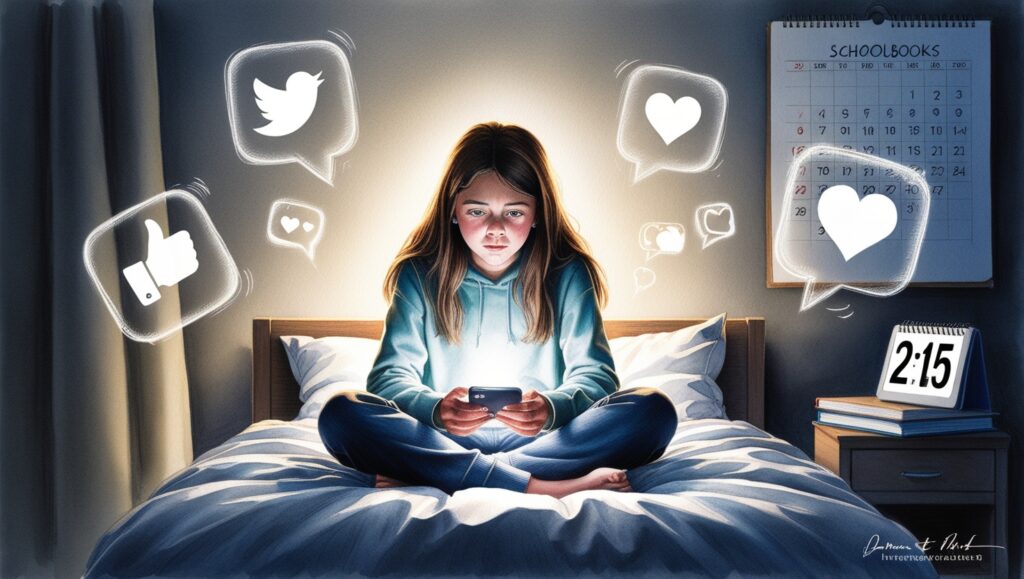

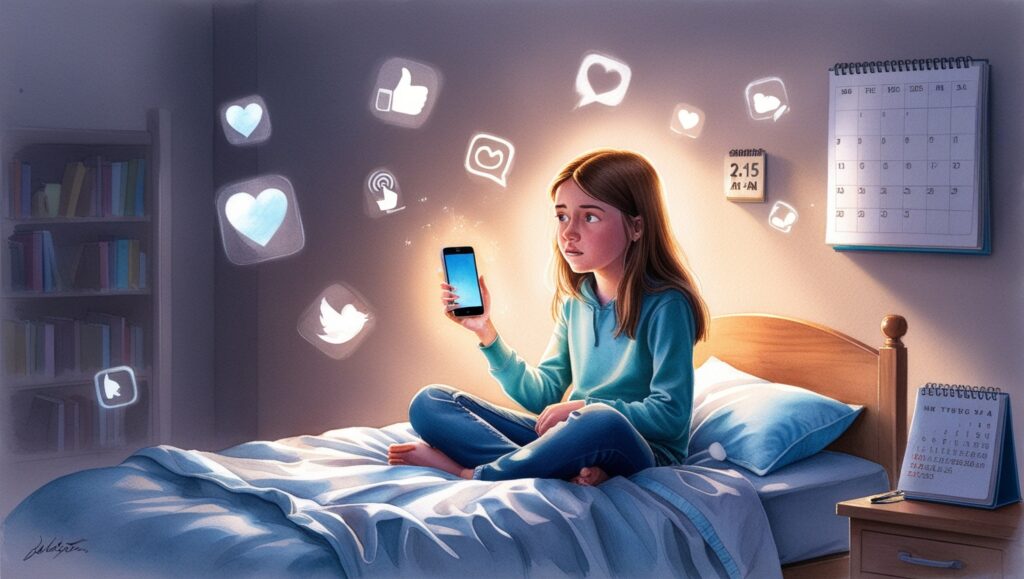
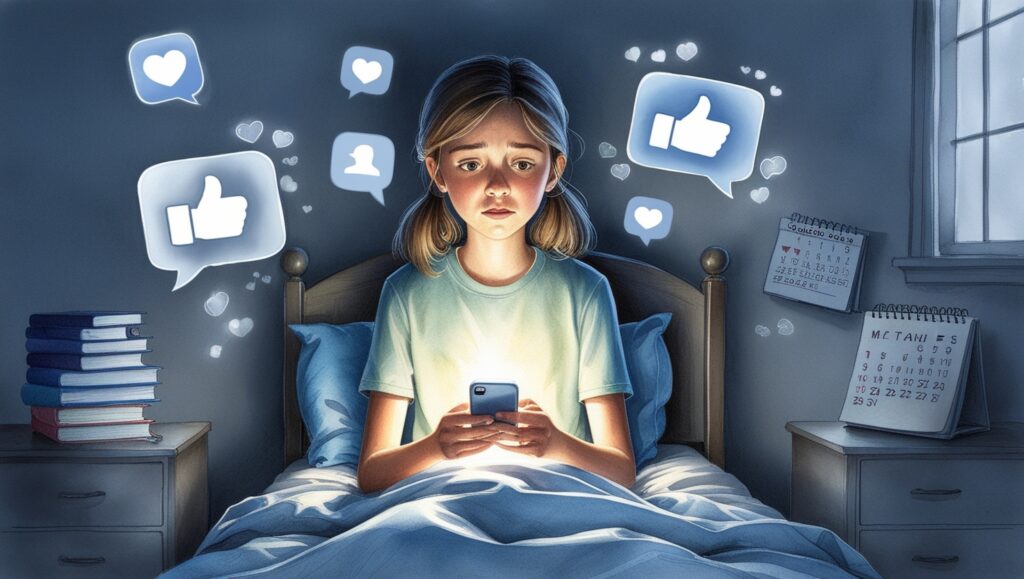
Neurological Effects of Social Media on the Teen Brain
The adolescent brain is still developing, particularly in areas that regulate impulse control, decision-making, and emotional responses. Social media activates the brain’s reward centers, especially those related to dopamine release.
When a teen receives a “like” or positive comment, their brain gets a quick hit of dopamine—the same chemical involved in pleasure and addiction. Over time, this can condition them to seek validation through digital interaction, similar to how addiction forms.
Psychological Studies and Trends (Latest 2025 Insight)
Recent studies up to 2025 show a nuanced picture:
- Teens who spend more than 3 hours a day on social media are at greater risk of experiencing mental health issues such as anxiety and depression.
- However, it’s not just the time spent, but the quality of interactions and the purpose behind usage that determines the psychological outcome.
- Researchers have begun emphasizing “active” vs “passive” usage. Actively chatting or engaging can be less harmful (and sometimes beneficial), whereas passively scrolling is more associated with negative outcomes.
Source: American Psychological Association & World Health Organization Youth Mental Health Report, 2025 edition.
Tips for Healthier Social Media Use
To mitigate risks and encourage better mental health, teens and families can adopt the following strategies:
- Set Daily Time Limits: Apps like Instagram now allow daily reminders or usage limits.
- Avoid Devices Before Bed: Blue light interferes with melatonin production, which affects sleep.
- Encourage Real-Life Interactions: Offline connections are still critical for emotional health.
- Unfollow Toxic Accounts: Teach teens to curate their feeds with people and content that uplift them.
- Talk Openly About Mental Health: Create a space where teens feel safe discussing online experiences.
Role of Schools and Parents
- Schools can include digital literacy and emotional education in the curriculum to help teens navigate social media healthily.
- Parents should model healthy online behavior and avoid excessive monitoring, which can lead to distrust. Instead, open and honest communication is more effective.
Conclusion
Social media isn’t inherently good or bad—it’s a powerful tool that reflects how we use it. For teens in 2025, it offers vast opportunities for connection and self-expression, but also opens doors to new mental health challenges. Awareness, balance, and support are the keys to helping teens use social media in a way that benefits their emotional and psychological growth.
By encouraging mindful usage, open dialogue, and healthy boundaries, we can ensure that social media becomes a bridge to well-being, not a barrier.
External Link (for deeper understanding)
Learn more on the psychology of social media:
https://en.wikipedia.org/wiki/Social_media_and_mental_health
Our Blogs You Might Like
- What If AI Became the Primary Educator 2025
https://edgythoughts.com/what-if-ai-became-the-primary-educator-2025 - How Does Dopamine Shape Decision Making 2025
https://edgythoughts.com/how-does-dopamine-shape-decision-making-2025
Can Dark Energy Maps Redefine Cosmic Evolution?
https://edgythoughts.com/can-dark-energy-maps-redefine-cosmic-evolution/
What If the Sun Never Rose Again One Day?
https://edgythoughts.com/what-if-the-sun-never-rose-again-one-day/


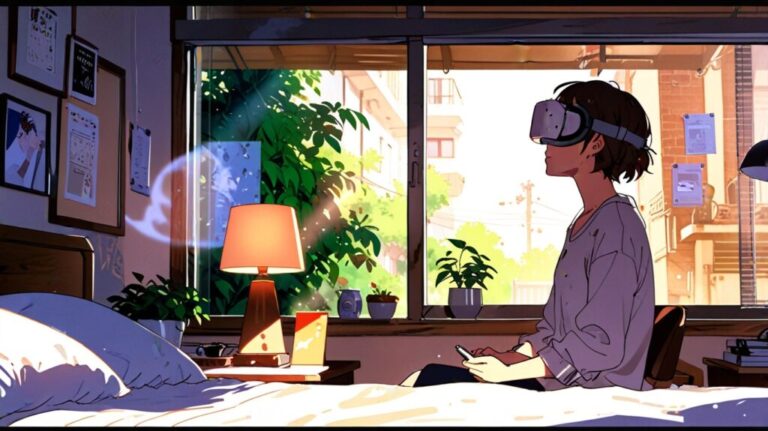


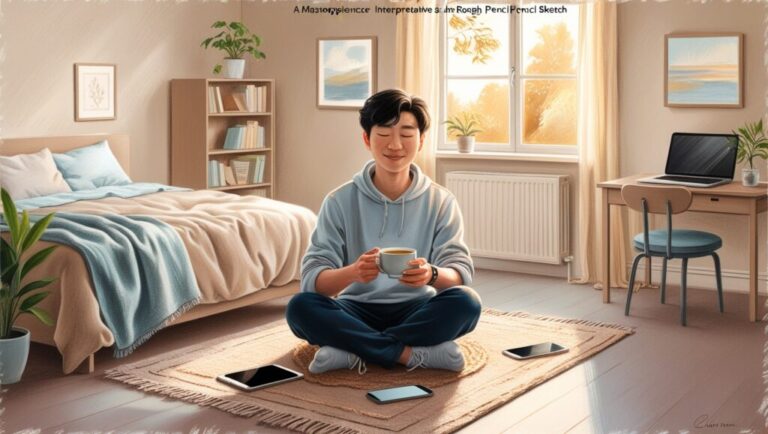
2 Comments